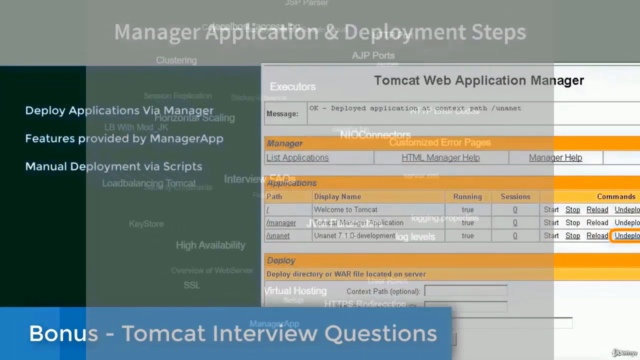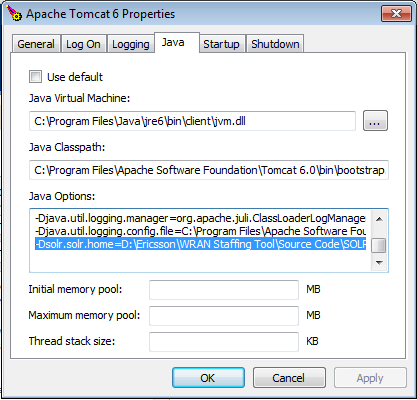
- #Setting up apache tomcat how to#
- #Setting up apache tomcat install#
- #Setting up apache tomcat verification#
It is assumed that Tomcat is installed at this time.
Set CLASSPATH for the Repository Tables. IIS to only forward requests to Tomcat through a firewall, configureĪ Tomcat stand-alone configuration, as explained in this section,Īnd then manually configure the Tomcat Connector, as explained in Configuring IIS to Use the Tomcat Connector (Plug-In). This requires configuring two servers and their communications. This is referred toĪs a Tomcat stand-alone configuration and all WebFOCUS processingĬan be used as the web server and Tomcat can be used as the application There are two configurations available when using Apache Tomcat:Īs both a web server and application server. New to Tomcat or receive errors, you should review this section You do not need to manually configure Tomcat. #Setting up apache tomcat verification#
If you chose this option and the verification tool ran successfully,
#Setting up apache tomcat install#
Provided the option to install and configure Apache Tomcat for you.

Tomcat for use with WebFOCUS and ReportCaster.
#Setting up apache tomcat how to#
This section explains how to manually configure Apache
Verifying the WebFOCUS Configuration With Apache Tomcat. To allow the CMS application to open the RMI port, edit conf/catalina. The alternative is to comment out the UserDatabase resource and realm in conf/server.xml. It is however configured in server.xml, so Tomcat will complain about it missing at level SEVERE. Mkdir -p /usr/local/share/tomcat-common/libīy default the configuration file tomcat-users.xml will not be used. Create the tomcat-common directory for the common classloader and place the required jars there:. Download the latest release of Apache Tomcat 8.5 or 9.0 and unpack it.įind /usr/local/tomcat/ -type d -print0 | xargs -0 chmod 755įind /usr/local/tomcat/ -type f -print0 | xargs -0 chmod 644įind /usr/local/tomcat/ -type f -name \*\.sh -print0 | xargs -0 chmod 755. Upgrading Apache Tomcat should be no more than changing a symlink and restarting. This way, all custom configuration can be done in Catalina Base and Catalina Home can be kept completely stock. To ease upgrades, we recommend to split up Catalina Base from Catalina Home. PreparationĬreate a user account so you can run Bloomreach Experience Manager under it's own user. It is possible to use different locations depending on your environment setup. Tomcat common libs under: /usr/local/share/tomcat-common/lib * 
Base Apache Tomcat installation under: /usr/local *.Bloomreach Experience Manager will run under its own dedicated user called cms, with home-directory: /opt/cms *.The instructions on this page aim for the following results: Relational database server (MySQL or other supported database server) already installed.For Bloomreach Experience Manager 15: Oracle or OpenJDK Java 11 JDK already installed under: /usr/java/jdk-11.0.15 *.For Bloomreach Experience Manager 14: Oracle or OpenJDK Java 8 JRE (or JDK) already installed under: /usr/java/jre1.8.0 *.The end result is the most commonly used setup based on the Developer Edition Stack and the brXM Standard Stack. This page describes how to set up a Bloomreach Experience Manager application server according to our best practices. Configure the Application Server (Apache Tomcat on Linux)Ĭonfigure an application server using the Bloomreach Experience Manager standard stack, running Apache Tomcat on a Linux operating system.






 0 kommentar(er)
0 kommentar(er)
